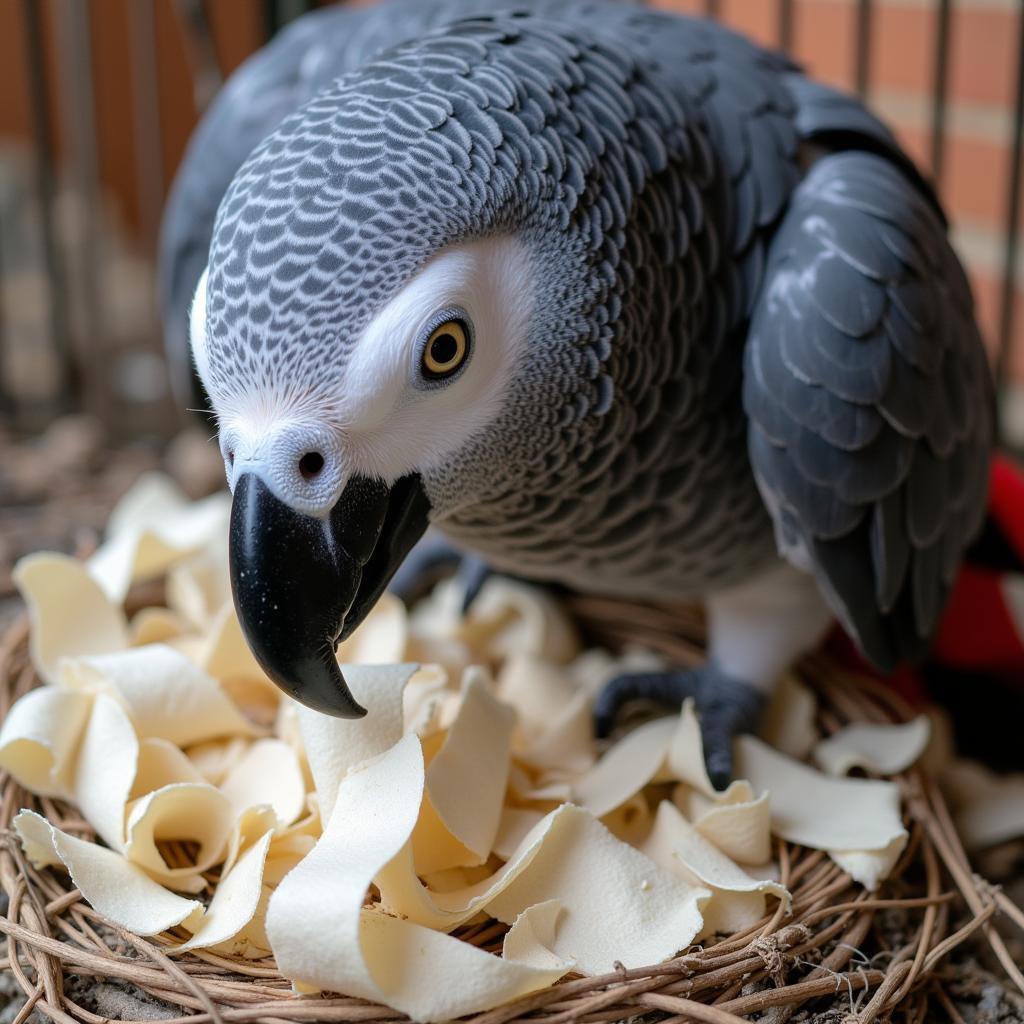African Deer with White Stripes: Unveiling the Secrets of Striped Antelope
African Deer With White Stripes evoke images of elusive creatures navigating the savannas. While the term “African deer” is often used colloquially, it’s important to clarify that true deer are not native to Africa. This phrase usually refers to various antelope species with distinct white stripes, each with unique characteristics and habitats. Let’s delve into the fascinating world of these striped antelope.
Decoding the Stripes: Which Antelope Are We Talking About?
Several African antelope species sport striking white stripes, making identification crucial. The african bongo deer is known for its vibrant chestnut coat and numerous thin white stripes. Then there’s the greater kudu, another majestic antelope with vertical white stripes adorning its reddish-brown coat. The springbok, a smaller antelope, boasts a prominent white stripe running along its flanks. Each species’ stripes serve different purposes, from camouflage to individual recognition.
The Elusive Bongo: A Forest-Dwelling Antelope
The bongo, a large and elusive antelope, prefers the dense forests of Central Africa. Its reddish-brown coat, adorned with numerous thin white stripes, provides excellent camouflage in the dappled light of the forest floor. Bongos are primarily nocturnal and are known for their spiral horns. What distinguishes a bongo from other striped antelope? Their large size, preference for dense forests, and nocturnal habits set them apart.
The Majestic Greater Kudu: A Symbol of Grace
The greater kudu, with its magnificent spiral horns and vertical white stripes, is a truly iconic African antelope. It inhabits a variety of habitats, from woodlands to savannas. The kudu’s stripes help it blend into the bush, providing protection from predators. How do kudu use their stripes? The stripes break up the kudu’s outline, making it harder for predators to spot them in the dappled shade.
The Springbok: A Symbol of Speed and Agility
The springbok, a smaller antelope known for its incredible leaping ability, also features a distinctive white stripe. This stripe, running along the springbok’s flanks, is particularly visible when it performs its characteristic “pronking” behavior, a series of high leaps. Why does the springbok pronk? Pronking serves as an alarm signal, alerting other springbok to potential danger. It also serves as a display of fitness, potentially deterring predators.
African Antelope Adaptations: Beyond the Stripes
While the white stripes are a defining characteristic of these antelope, their adaptations go beyond mere markings. Their keen senses, speed, and agility contribute to their survival in the diverse African landscape. They have also evolved specific dietary preferences and social structures tailored to their respective habitats. Consider the african antelope eland, another remarkable species known for its adaptability.
Dr. Alani Okeke, a renowned wildlife biologist, notes, “The varied stripe patterns on African antelope are not just aesthetically pleasing; they serve crucial functions in the animals’ survival, from camouflage to social signaling.”
The Importance of Conservation
Understanding and appreciating these striped antelope is crucial for their conservation. Habitat loss, poaching, and climate change pose significant threats to their survival. Supporting conservation efforts is essential to ensure these magnificent creatures continue to roam the African landscape.
Professor Fatima Mbaye, a conservation expert, emphasizes, “Protecting these antelope is not just about preserving individual species; it’s about safeguarding the biodiversity of the entire African ecosystem.” The african deer greater kudu particularly faces habitat loss due to expanding human settlements.
Conclusion: A Celebration of African Wildlife
African deer with white stripes, encompassing various antelope species like the bongo, greater kudu, and springbok, represent the beauty and diversity of African wildlife. Understanding their unique adaptations and supporting conservation efforts are crucial for their continued survival. Let’s cherish and protect these magnificent creatures for generations to come. Consider also learning more about the african bongo and african deer springbok to expand your knowledge of African wildlife.
For any assistance, contact us at +255768904061, kaka.mag@gmail.com, or visit us in Mbarali DC Mawindi, Kangaga, Tanzania. Our customer service team is available 24/7.

